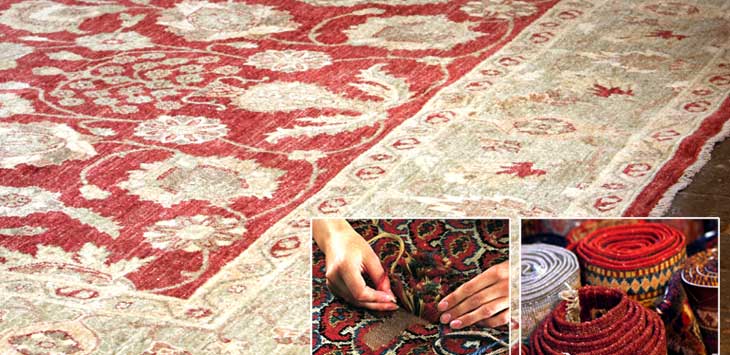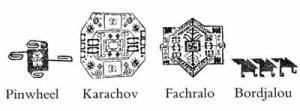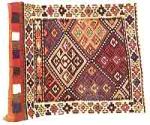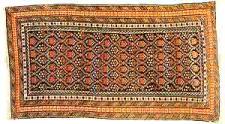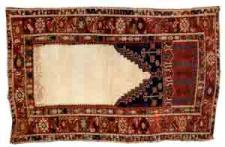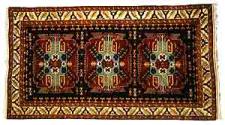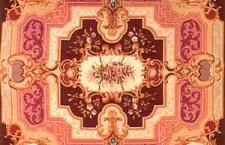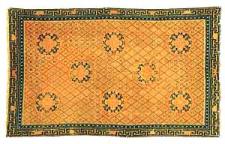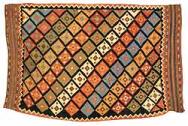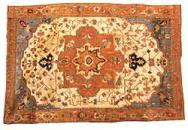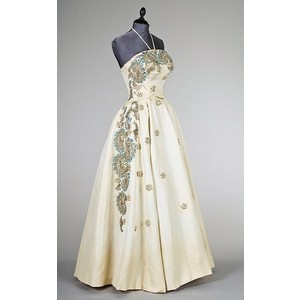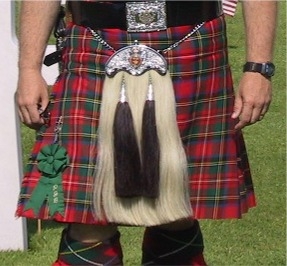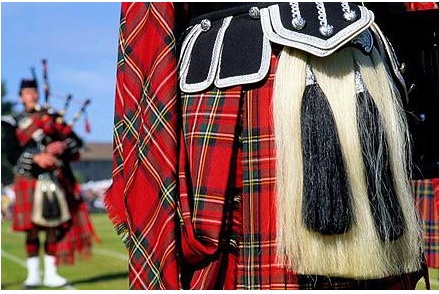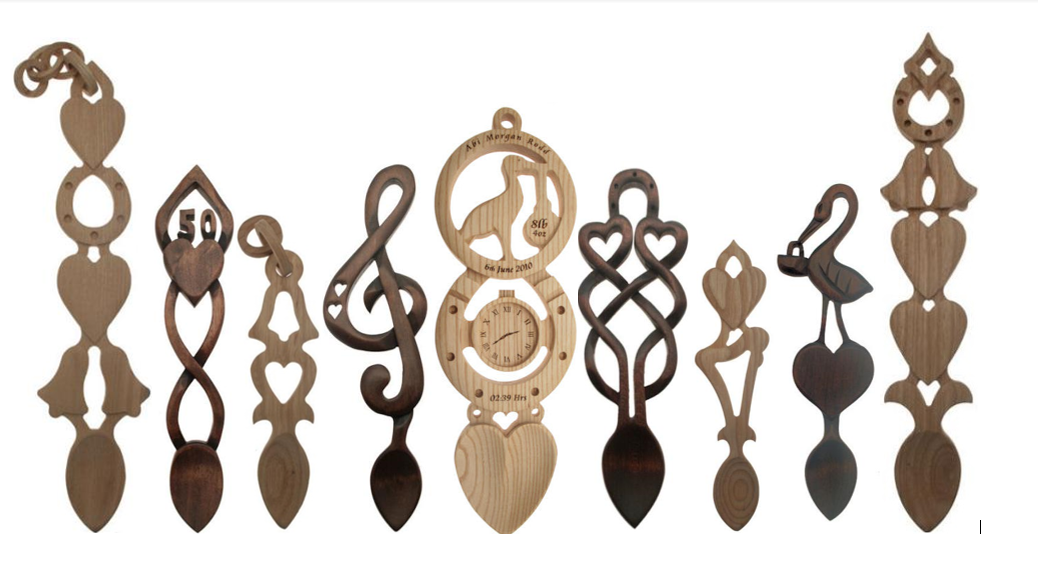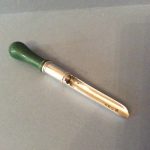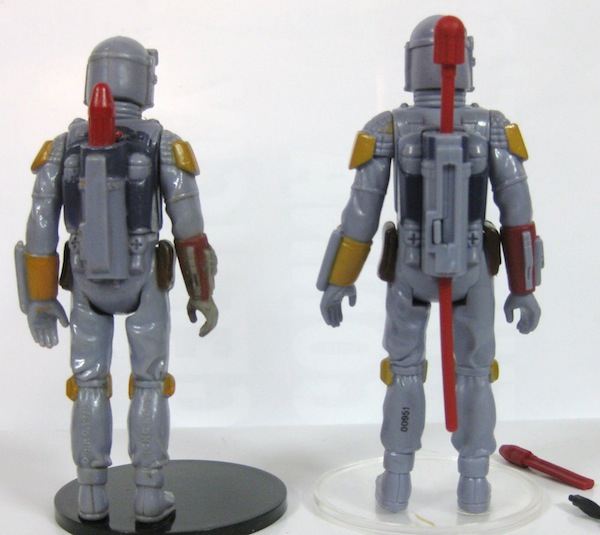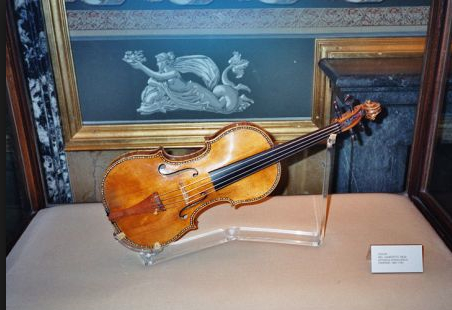Rugs and carpets come in an endless variety of patterns and sizes. They make beautiful, decorative objects to collect – whether you’re an enthusiastic amateur or a dedicated professional.
Broadly speaking, rugs and carpets fall into two main groups: serious collectors’ rugs, and decorative rugs. Older rugs (over 100 years old) are mainly of interest to the specialist collector. Recently made rugs and carpets are chiefly of interest to the decorative buyer.
The only difference between a rug and a carpet is size. Rugs are usually small enough to hang on the wall – up to approximately 2m (6.5ft) long – while anything larger is usually referred to as a carpet.
Most rugs are categorised by their place of origin or the tribe which made them. To be able to identify the difference between, say, a Kazak and a Kuba, you need to familiarise yourself with the various distinctive colours, patterns, motifs and weaves characteristic of each type.
Collectable rugs should be handmade
The size, richness of the colours, fineness of the knots, intricacy of design and condition are all important when valuing an antique rug. Collectable rugs should be handmade. To check, look on the reverse – you should be able to see the design on the back as well as on the front. Next, part the pile and look at the knots. If there are loops rather than knots this indicates a machine-made rug of very little interest to collectors. Many types of antique rug cost little more than modern replicas. Woven Kelims and Soumacs can be found for around £300.
Materials
The foundation material of a rug (the warp and weft) is usually wool, cotton or (rarely) silk. The best quality wool is fine, soft and shiny. Inferior quality wool is coarse and lacks lustre.
Colours
Colour is one of the most important factors in assessing old rugs. The best colours are those made from natural vegetable and insect dyes.
Natural dyes. Blues and reds predominate in most old rugs. Warm red colours are usually derived from the plant madder. Blue comes from indigo. Sometimes crimson comes from insect dyes such as chineal. This indicates a date after c.1850 when cochineal was first imported to the East.
Chemical (aniline) dyes. These were introduced c.1890. They tend to be harsher in tone, and are not colour-fast.
Chromatic dyes. These were first used in the early 20th century. They can be difficult to distinguish from natural dyes as they’re colour-fast, but they lack the subtlety of natural dyes, and come in a wider colour range.
Knots
The type of knot used to attach the pile to the warp and weft can help identify where the rug was made. The quality of a rug is reflected by the fineness of the knots which are measured according to their square decimetre (about 15 square inches). A coarse rug may have 400 knots per square decimetre, whereas a fine one may have many thousands.
There are two main types of knot used:
- Turkish, symmetric or Ghiordes, which was used in Turkey and many tribal groups in Persia and Central Asia.
- Persian, asymmetric or Senneh, which was used by some Central Asian groups. The threads can be open to the left or right.
Carpet care
Carpets can be washed with plain warm water or cold water and a mild detergent. Snow is a good way of removing dust: cover the rug with snow and brush it off and it will take the dust with it!
Caucasian and Turkish rugs
Distinctive geometric designs are a keynote of many types of Oriental rug made in the Caucasus, the region between the Black and Caspian Seas. Carpets were made by villagers and each area has its own characteristics.
Turkish carpets fall into two groups: factory-made ones and those made by nomadic tribal weavers. Rugs cover a wide spectrum of prices, from expensive silk rugs to cheaper Anatolian kilims.
Kazak rugs
Large, bold geometric designs and long, good-quality wool are features of Kazak rugs. These carpets are usually relatively small. The one pictured above is 150 x 113cm (5ft x 3ft9in) and is worth £1,500 to £2,500.
Kazak rugs are often named according to their distinctive designs. These are some of the most common motifs.
What to look for
- bright vibrant colours, preferably coloured with vegetable dyes
- finely textured weaving
- good condition, unless very early
- complete rugs – cut-down ones are less desirable
- a natural patina
Soumaks
Soumaks are a type of kilim and are one of the easiest of the Caucasian rugs to identify because they are flat-woven rather than knotted, but unlike other kilims, they’re patterned on one side only.
Trappings such as bags, saddle covers and tent hangings are always popular with collectors and can be surprisingly expensive. This Soumak bag-face would cost about £400.
What the colours mean
- red: happiness
- black: rebellion and devastation
- brown: plenitude, fruitfulness
- white: cleanliness, serenity
- green: rejuvenation
- gold: prosperity
- white: purity
Shirvan rugs
Shirvans typically have short pile and small geometric patterns, in which dark blues and strong reds predominate. Rugs like this one cost from £1,500 to £2,000.
Lâdik prayer rugs
The central Anatolian village of Lâdik is renowned for its fine-quality prayer rugs. This one contains a poetic inscription at the base of the mihrab, or arch shape. A prayer rug like this could be worth more than £5,000.
Modern rugs
Modern rugs and carpets, such as this Shirvan, are coloured with synthetic dyes which look harsh compared to naturally dyed rugs. They can also be identified by their longer pile and cotton warp and weft. Although they are still of interest to the decorative buyer they are far less valuable. This one is worth £300 to £500.
Is it old?
- Check the pile with a magnifying glass. If the fading is soft and gradual it’s old; if you can see three distinct bands of colour the rug may have been artificially aged.
- Lick a handkerchief and rub it on the carpet . Dyes which come off copiously may be chemical – an indication that the carpet is not of great age.
European carpets
If you visit a sale of Oriental rugs or a specialist carpet dealer you may be surprised at the large number of European-made carpets on offer, including Aubusson carpets and needlework rugs.
Needlework rugs
Needlework rugs are a popular and common type of European rug. Many were made by ladies of the leisured classes from the 16th century onwards, but some were commercially produced during the 19th century.
Designs are colourful and extremely varied. Some patterns were derived from printed textiles.
The pleasant floral design, good condition, and colours that haven’t faded are all signs of good quality, which add to the desirability of the needlework rug pictured above. A rug like this one, from the mid-19th century, would cost about £5,000.
Aubussons
Flower-filled rugs from the Aubusson region of France have also enjoyed a huge upsurge in popularity. If the price of an Aubusson is out of your reach, you may be able to find slightly worn small rugs or fragments of larger ones for more modest sums.
Aubussons such as this, made about 1890, were woven on a loom and have no pile. Expect to pay about £10,000 for one like this.
Pattern
The design was built up one colour at a time, each colour woven back and forth only in the area required. When a new colour was added a vertical split was left between the wefts (the threads that run crosswise), and this was stitched up by hand afterwards.
Borders
This border of the Aubusson rug above has been cut or folded back. Aubussons were originally made with very wide, plain borders and were intended to fit right up to the walls and to be cut around fireplaces.
Indian and Chinese rugs
Indian carpets often reflect the influence of Persian rugs. India is famed for its woven dhurries – the Indian equivalent of kilims. Chinese rugs feature beasts and symbols. Most rugs you’ll come across date from the 19th century or later.
Indian carpets
Prison may seem an unlikely place to making valuable carpets, but during the 19th century large numbers of woven and pile carpets were made in Indian jails such as Agra, Amritsar and Hyderabad and today these are extremely sought after.
Carpets made in India for the European market were often extremely large. A big rectangular carpet is usually more desirable than a big square one. The Agra carpet pictured above measures 6m x 4.24m (19ft 9in x 13ft 11in) and is worth about £20,000.
Value points
- Pile Agras are among the most valuable of Indian carpets. Prices range from £10,000 to £25,000.
- Indian carpets with white or yellow backgrounds are usually more valuable than red or blue, which are more common.
- Dhurries are the least expensive of Indian carpets. Prices range from £500 to £4,000 for a large one.
Chinese carpets
Traditional motifs seen in Chinese art provided the inspiration for the patterns seen on rugs made in China. The design of this Ningsia rug was probably adapted from contemporary brocade. A rug like this would cost about £5,000.
Value points
- Chinese carpets are less fashionable than Indian ones – at the moment. Those made in the 19th century usually fall in the £3,000 to £5,000 price range.
- Chinese carpets from the 1950s or later that copy French designs are not as valuable as traditionally patterned ones.
Persian rugs
The finest Persian rugs are made from silk and are the most expensive of all Oriental carpets. Most examples you’ll come across date from the 19th and 20th centuries and may be either tribal village pieces, or town-made factory pieces.
Prayer rugs
Garden motifs recur in many Persian rugs and are inspired by the Islamic notion of the garden of Paradise. Prayer rugs are small carpets used to kneel on during prayer. Their design features a mihrab, or arch, which should be aligned to point towards Mecca during prayers.
The late 19th-century prayer rug pictured above shows a lush garden through the mihrab. It would be valued at £800 to £1,800.
Kilims
Unlike any other types of carpets, kilims are flat-woven and have no knots and no pile. The many modern reproduction kilims are identifiable by their bright colours and coarse weave.
Old or antique rugs are finely woven and softly coloured. This Qashqa’i kilim, which dates from the late 19th century, would cost over £800.
Condition
This Heriz carpet from north-west Persia has areas of repiling, and the outermost borders at each end have been cut and bound. Even so, because it’s attractively coloured and a good size – 4.35m x 2.97m (168in x 114in) – it’s still worth more than £6,000.

